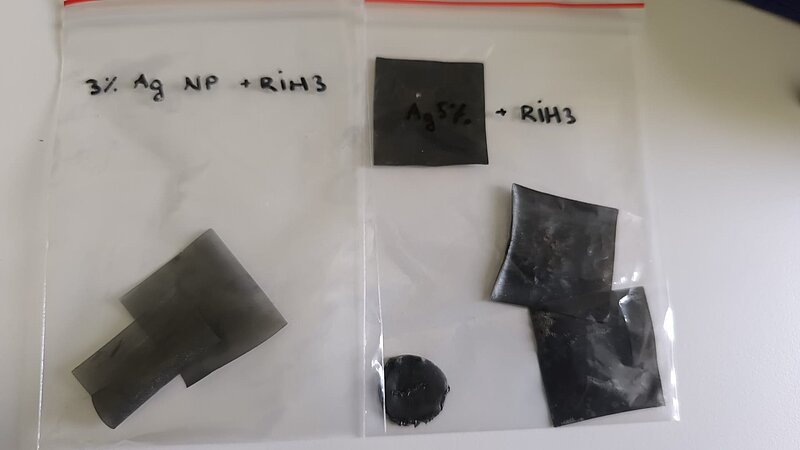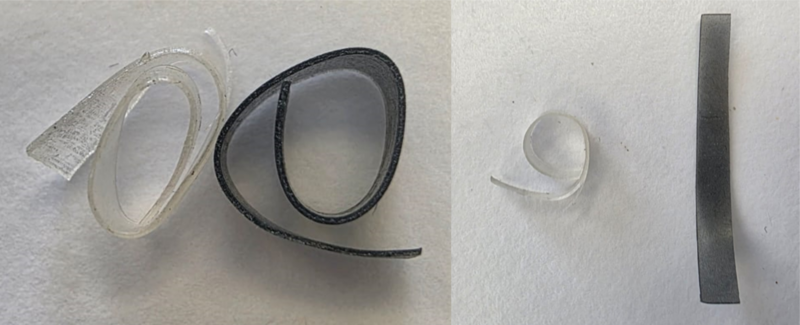Identification number: lzp-2023/1-0521
Type: Latvian Council of Science Fundamental and Applied Research project
Project duration: 01.01.2024.-31.12.2026.
Project Leader: Dr.phys. Virgīnija Vītola, Institute of Solid State Physics, University of Latvia
Total funding: 299 922 EUR
Project aim:
This project aims to explore biocompatible composite materials capable of sequential folding, achieved through light induced photothermal effects in nanoparticles embedded within the composite. The project's main objective is to synthesize and improve light-responsive materials for 4D printing, enabling sequential folding.
Expected scientific results:
The proposed project aims to develop light-responsive materials for 4D printing of vascular junction elements, enabling the repair of blood vessels and treatment of thromboembolic diseases. Leveraging the capabilities of 4D printing, which allows objects to change shape over time in response to external stimuli, the project seeks to fabricate smart, active structures using shape-changing polymers activated by light. 4D printing holds immense potential in the field of biomedical engineering. By utilizing shape memory polymers, hydrogels, and liquid crystal elastomers, 4D printing enables the creation of complex structures without the need for assembly. In this project, the focus lies on exploiting this technology to develop biocompatible materials that can serve as scaffolds for repairing damaged blood vessels. This project aims to explore biocompatible composite materials capable of sequential folding, achieved through light induced photothermal effects in nanoparticles embedded within the composite. The project\'s main objective is to synthesize and improve light-responsive materials for 4D printing, enabling sequential folding. It entails investigating the synthesis parameters of composite to enhance folding properties and exploring the actuation properties of the polymer and nanoparticles in response to different light power densities and wavelengths. The anticipated impact of this project is significant, benefiting both material science and medicine.
This project explores a cutting-edge direction in material science: the development of light-responsive, shape-shifting materials using 4D printing. Our goal is to create smart polymer composites that can change their shape when exposed to light—a property known as the shape memory effect. These materials could one day be used in medical applications, such as minimally invasive vascular implants, as well as in soft robotics and microengineering.
The innovative aspect of our work lies in creating biodegradable, biocompatible materials that respond to different light wavelengths, enabling precise and programmable shape transformations. This is achieved by embedding photothermal nanoparticles—such as silver (Ag) or copper sulfide (CuS)—into polymer matrices. When irradiated with specific light, the nanoparticles heat up and trigger the shape recovery process in the surrounding material.
We use microwave-assisted synthesis to produce the nanoparticles, solvent casting to fabricate the composite materials, and 3D/4D printing technologies to create functional structures. Our team has already successfully demonstrated light-triggered actuation and printed first test samples, and we are now working on scaling up the material for more complex geometries.
The project is led by Dr. Virgīnija Vītola at the Institute of Solid State Physics, University of Latvia, in collaboration with the Institute of Polymer Materials at Riga Technical University. This interdisciplinary partnership allows for a strong exchange of knowledge between materials chemistry and biomedical engineering.
Follow our journey as we unlock new possibilities in smart materials and 4D printing. Project updates, publications, and outreach activities will be regularly posted here!
Project news and updates:
A lecture was given at the University of Latvia's Young Physicists School titled "Optiskie materiāli" (08.02.2025).
March–May 2025: Shape Memory Polymer Composite with Ag Nanoparticles Successfully Developed
Our team has developed a biodegradable, light-activated shape memory composite using silver nanoparticles. We demonstrated that:
- The material exhibits the shape memory effect,
- It can be triggered by light, and
- It is printable using SLA 3D printing methods.
We have now scaled up the synthesis and are preparing a 15g batch for printing larger test structures!
We have published these publications:
Krizmane, K., Dile, M., Einbergs, E., Vitola, V., Knoks, A., Hamawandi, B., & Zolotarjovs, A. (2025). Optimising photothermal silver nanoparticles for efficient light-activated shape memory response in AgNP-polymer composites. Latvian Journal of Physics and Technical Sciences, 62(3).
Biswas, A., Apsite, I., Rosenfeldt, S., Bite, I., Vitola, V., & Ionov, L. (2024). Modular photoorigami-based 4D manufacturing of vascular junction elements. Journal of Materials Chemistry B, 12, 5405–5417. https://doi.org/10.1039/D4TB00236A

